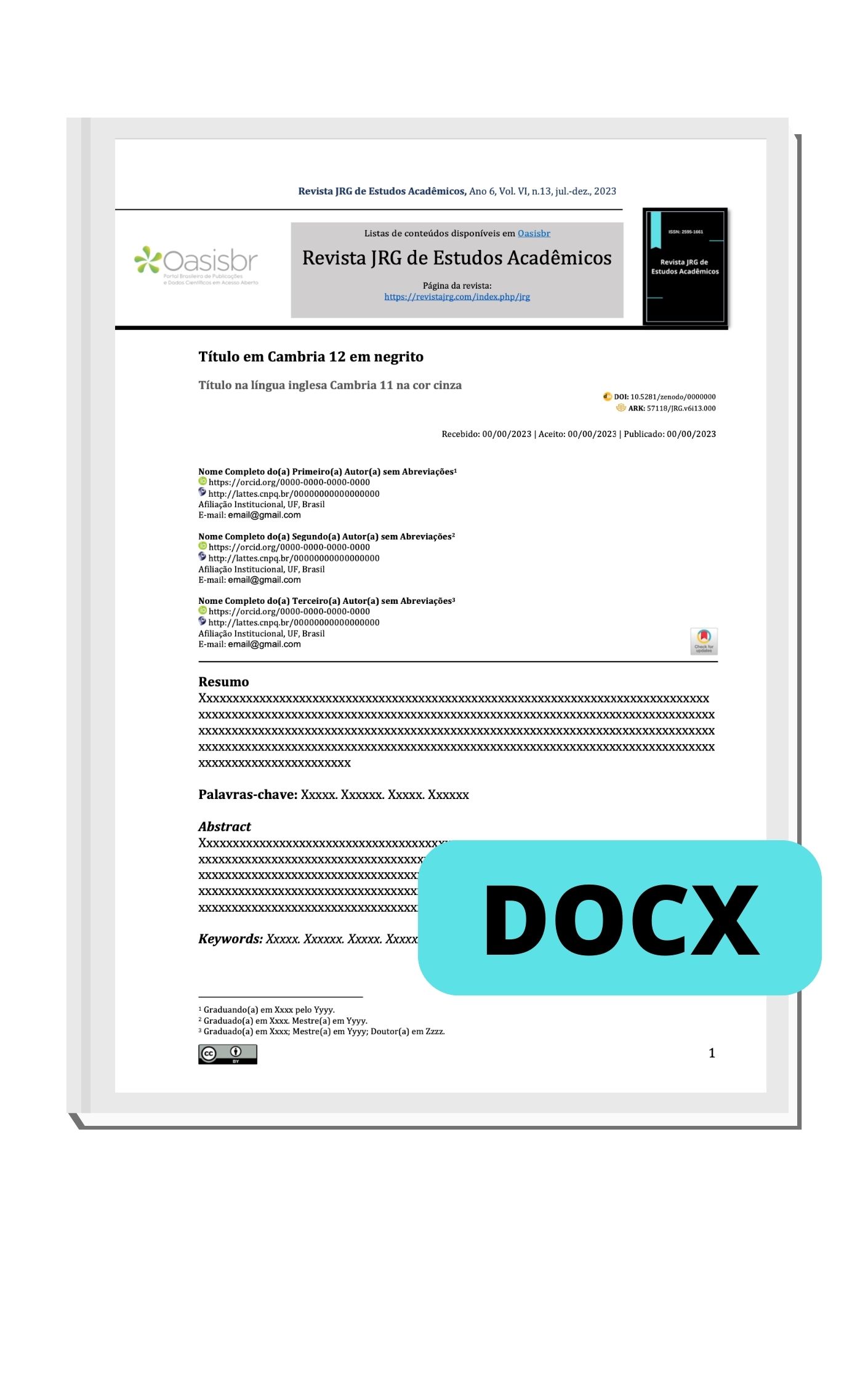Use of double-carbapenem therapy in an intensive care unit
DOI:
https://doi.org/10.55892/jrg.v8i18.1844Keywords:
Intensive Care Units; Bacterial Infections; Carbapenems; Carbapenem-Resistant Enterobacteriaceae; Multiple Drug Resistance Bacterial.Abstract
Infections in critically ill patients admitted to Intensive Care Units (ICUs), especially Healthcare-Associated Infections (HAIs), are common due to the severity of clinical condition and invasive procedures, increasing susceptibility to infections mainly caused by multidrug-resistant microorganisms. Observational studies have shown some benefit of using double-carbapenem therapy in treatment of severe infections, especially those caused by multidrug-resistant gram-negative bacteria. A survey was conducted on the profile of double-carbapenem use in the ICU of a public hospital in the Federal District through retrospective data collection from the medical records of 72 critically ill adult patients who had used a double-carbapenem therapeutic regimen for at least 48 hours between March 2021 and February 2023. The average age was 54 years, with respiratory diseases, notably acute respiratory failure from COVID-19, being the main reason for hospitalization. The start of treatment was mostly empirical (81.94%), and the majority of patients (61.11%) had at least one positive culture result during their hospitalization in the ICU, with an average stay of 29.4 days. Among the cultures that led to double-carbapenem use, there was a predominance of the identification of multidrug-resistant Klebsiella pneumoniae bacteria. Almost all patients received an increased dose of meropenem in extended infusion, associated with ertapenem with optimized scheduling. There were 37 (51.39%) deaths, and it was not possible to establish a relationship with the treatment. By identifying the use profile of the double-carbapenem regimen, it is possible to observe the need for a multidisciplinary and integrated approach to promote its judicious use through assertive actions, such as continuous education and the adoption of institutional protocols to optimize infection treatment in the ICU.
Downloads
References
AFONSO, L. S. R.; MILER-DA-SILVA, L. L.; GARRIDO, R. G. Estratégias terapêuticas para infecções por Klebsiella pneumoniae carbapeném resistente: uma revisão narrativa. Research, Society and Development, v. 11, n. 7, p. e46211730296, 31 maio 2022.
ANDRADE, D. DE; LEOPOLDO, V. C.; HAAS, V. J. Ocorrência de bactérias multiresistentes em um centro de Terapia Intensiva de Hospital brasileiro de emergências. Revista Brasileira de Terapia Intensiva, v. 18, n. 1, mar. 2006.
ANTOCHEVIS, L. C. et al. KPC-producing Klebsiella pneumoniae bloodstream isolates from Brazilian hospitals: What (still) remains active? Journal of Global Antimicrobial Resistance, v. 15, p. 173–177, 1 dez. 2018.
ARNOLD, R. S. et al. Emergence of Klebsiella pneumoniae Carbapenemase-Producing Bacteria. Southern Medical Journal, v. 104, n. 1, p. 40–45, jan. 2011.
BONELLI, R. R.; MOREIRA, B. M.; PICÃO, R. C. Antimicrobial resistance among Enterobacteriaceae in South America: History, current dissemination status and associated socioeconomic factors. Drug Resistance Updates, v. 17, n. 1-2, p. 24–36, abr. 2014.
BRASIL. Ministério da Saúde. Gabinete do Ministro. Portaria nº 2.616, de 12 de maio de 1998. Dispõe sobre a obrigatoriedade da manutenção pelos hospitais do país do Programa de Controle de Infecções Hospitalares. Diário Oficial da União, Brasília, DF, 13 mai. 1998. p. 133.
BRASIL. Agência Nacional de Vigilância Sanitária. Programa Nacional de Prevenção e Controle de Infecções Relacionadas à Assistência à Saúde (PNPCIRAS), 2021 - 2025. Brasília, 2021.
CONSELHO FEDERAL DE MEDICINA (Brasil). Resolução CFM n° 2271, de 23 de abril de 2020. Define as unidades de terapia intensiva e unidades de cuidado intermediário conforme sua complexidade e nível de cuidado, determinando a responsabilidade técnica médica, as responsabilidades éticas, habilitações e atribuições da equipe médica necessária para seu adequado funcionamento. Diário Oficial da União, Brasília, DF, 23 abr. 2020, Seção I, p. 90.
GALES, A. C. et al. Antimicrobial resistance among Gram-negative bacilli isolated from Latin America: results from SENTRY Antimicrobial Surveillance Program (Latin America, 2008-2010). Diagnostic Microbiology and Infectious Disease, v. 73, 2012.
HIRSCH, E. B.; TAM, V. H. Detection and treatment options for Klebsiella pneumoniae carbapenemases (KPCs): an emerging cause of multidrug-resistant infection. Journal of Antimicrobial Chemotherapy, 2010.
KAISER, T. D. L. et al. Prevalência de infecções bacterianas e perfil de resistência aos antimicrobianos em pacientes internados com COVID-19. Revista de Epidemiologia e Controle de Infecção, v. 14, n. 1, 8 mar. 2024.
LEE, G. C.; BURGESS, D. S. Treatment of Klebsiella pneumoniae carbapenemase (KPC) infections: a review of published case series and case reports. Annals of Clinical Microbiology and Antimicrobials, 2012.
LEE, G. C. Epidemiology and treatment of KPCs. What is the news? Pharmacotherapy Rounds, 2012.
LI, Y. et al. Double-carbapenem therapy in the treatment of multidrug-resistant Gram-negative bacterial infections: a systematic review and meta-analysis, 2020.
MARRA, A. R.; WEY, S. B.; CASTELO, A. et al. Nosocomial bloodstream infections caused by Klebsiella pneumoniae: impact of extended-spectrum beta-lactamase (ESBL) production on clinical outcome in a hospital with high ESBL prevalence. BMC Infectious Diseases, 2006.
MARTINS, S. T.; MOREIRA, M.; FURTADO, G. H. C. et al. Application of control measures for infections caused by multi-resistant gram-negative bacteria in intensive care unit patients. Memórias do Instituto Oswaldo Cruz, 2004.
MENDEZ, A. S. L. Estudo de Estabilidade do Antibiótico Meropenem. Porto Alegre: UFRGS, 2007. - xxvi, 246p.: il.
MEIJERINK, C. I. et al. Analysis of patient profile and factors related to healthcare-associated infections due to multidrug-resistant bacteria in the ICU of a hospital in Southern Brazil. Research, Society and Development, v. 11, n. 16, 2022.
MONTEIRO, J.; SANTOS, A. F.; ASENSI, M. D.; PEIRANO, G.; GALES, A. C. First report of KPC-2-producing Klebsiella pneumoniae strains in Brazil. Antimicrobial Agents and Chemotherapy, 2009.
NEUNER, E. A.; YEH, J. Y.; HALL, G. S. et al. Treatment and outcomes in carbapenem-resistant Klebsiella pneumoniae bloodstream infections. Diagnostic Microbiology and Infectious Disease, 2011.
NÓBREGA, O. T. Imunossenescência: a relação entre leucócitos, citocinas e doenças crônicas. Revista Brasileira de Geriatria e Gerontologia, v. 11, n. 2, 2008.
OLIVEIRA, D.; SALAROLI, M. Avaliação farmacocinética de Meropenem e vancomicina em pacientes submetidos à diálise estendida de baixa eficiência (SLED). 2017. Tese (Doutorado) - Curso de Medicina, Universidade de São Paulo.
ORGANIZAÇÃO PAN-AMERICANA DA SAÚDE. OMS declara fim da emergência de saúde pública de importância internacional referente à COVID-19. 5 maio 2023. Disponível em: . Acesso em: 23 dez. 2024.
OTEO, J. et al. Caracterización de mecanismos de resistência por biologia molecular: Staphylococcus aureus resistente a meticilina, B-lactamasas de espectro extendido y carbapenemasas. Enfermedades Infecciosas y Microbiología Clínica, 2015.
PAULA, V.G. et al. Enterobactérias produtoras de carbapenemase: prevenção da disseminação de superbactérias em UTI’s. Universitas: Ciências da Saúde, Brasília, v. 14, n. 2, p. 175-185, jul./dez. 2016.
PEDROSO, T. M. Desenvolvimento e validação de métodos analíticos para caracterização e quantificação de ertapenem sódico em pó liofilizado para solução injetável. 2017. Tese (Doutorado) - Curso de Ciências Farmacêuticas, Faculdade de Ciências Farmacêuticas, UNESP.
QUEENAN, A. M.; BUSH, K. Carbapenemases: the versatile beta-lactamases. Clinical Microbiology Reviews, 2007.
MOREIRA, R. S. COVID-19: unidades de terapia intensiva, ventiladores mecânicos e perfis latentes de mortalidade associados à letalidade no Brasil. Cadernos de Saúde Pública, v. 36, n. 5, 2020.
SOUSA, A.F.L.; OLIVEIRA, L.B.; MOURA, M.E.B.: Perfil epidemiológico das infecções hospitalares causadas por procedimentos invasivos em unidade de terapia intensiva, Rev. Pre. Infec e Saúde.2016;2(1-2):11-7.
SAMPAIO, J. L.; GALES, A. C. Antimicrobial resistance in Enterobacteriaceae in Brazil: focus on β-lactams and polymyxins. Brazilian Journal of Microbiology, 2016.
SBRANA, F.; MALACARNE, P.; VIAGGI, B. et al. Carbapenem-sparing antibiotic regimens for infections caused by Klebsiella pneumoniae carbapenemase-producing K. pneumoniae in intensive care units. Clinical Infectious Diseases, 2013.
SENA, N. S. et al. Infecções hospitalares em Unidade de Terapia Intensiva: Uma revisão integrativa. Research, Society and Development, v. 11, n. 10, 2022.
SCHWABER, M. J. et al. Predictors of carbapenem-resistant Klebsiella pneumoniae acquisition among hospitalized adults and effect of acquisition on mortality. Antimicrobial Agents and Chemotherapy, 2008.
SILVA, H. A. et al. Perfil de utilização e custos de carbapenêmicos em uma unidade de terapia intensiva de um hospital público do Distrito Federal – Brasil. Research, Society and Development, v. 10, n. 14, 2021.
TÄNGDÉN, T. et al. Global dissemination of extensively drug-resistant carbapenemase-producing Enterobacteriaceae: clinical perspectives on detection, treatment and infection control. Journal of Internal Medicine, v. 277, 2015.
WALSH, T. R. Emerging carbapenemases: a global perspective. International Journal of Antimicrobial Agents, n. 36, 2010.
WANG, S. et al. Genomic Epidemiology and Characterization of Carbapenem-Resistant Klebsiella pneumoniae in ICU Inpatients in Henan Province, China: a Multicenter Cross-Sectional Study. Microbiology Spectrum, 2023.











































